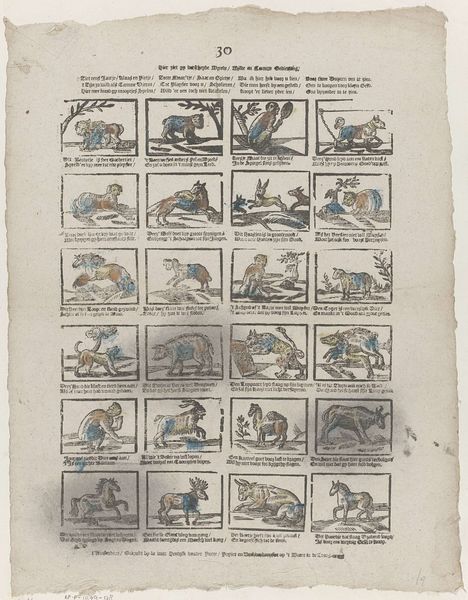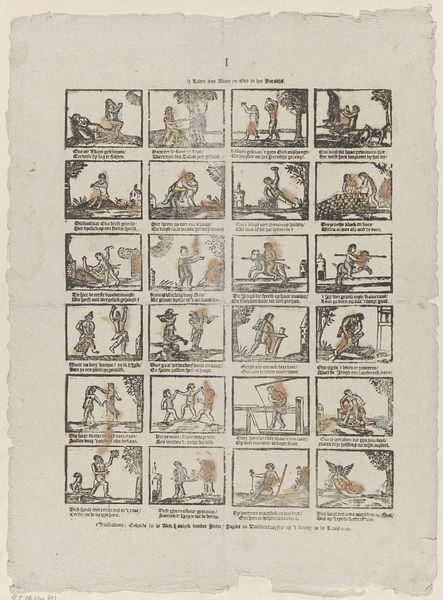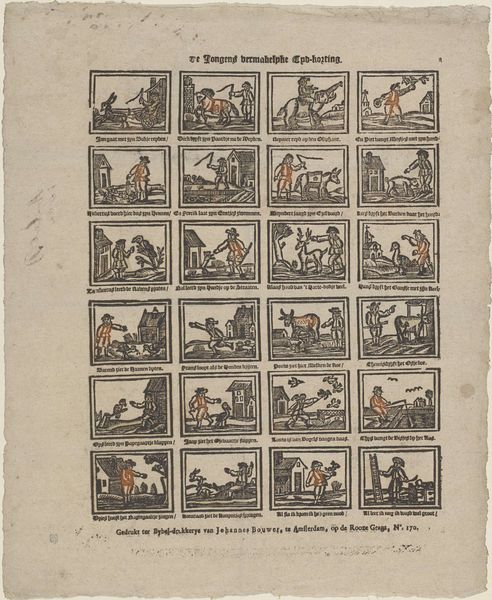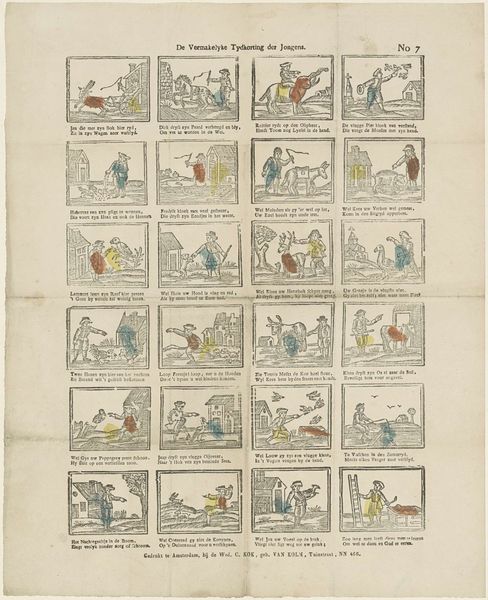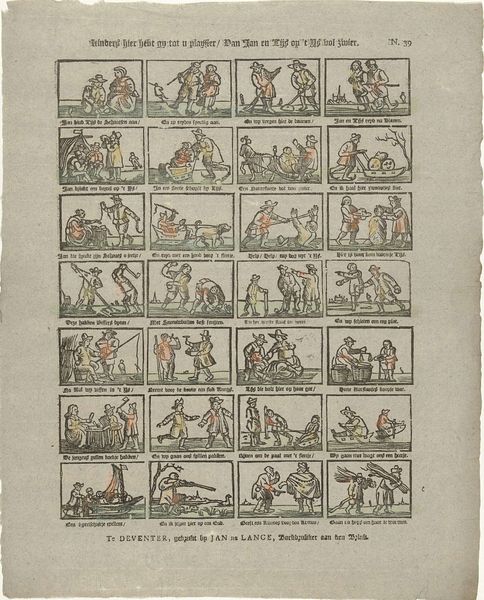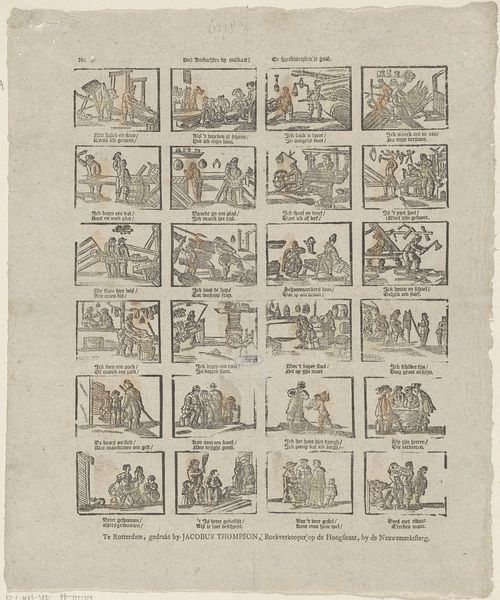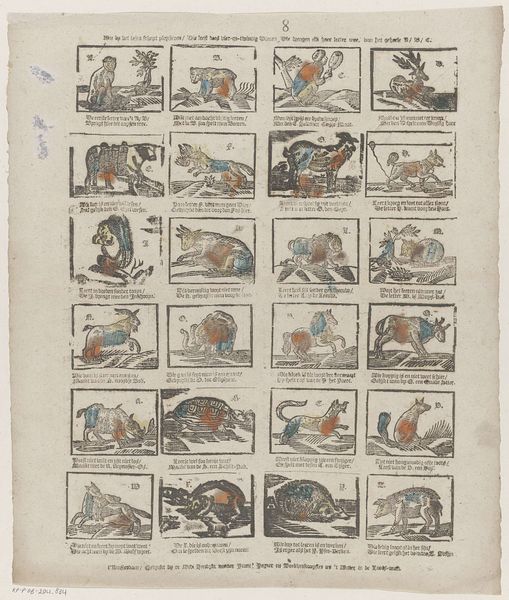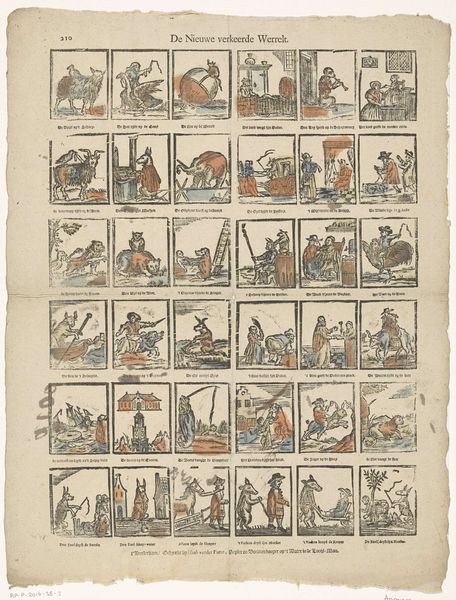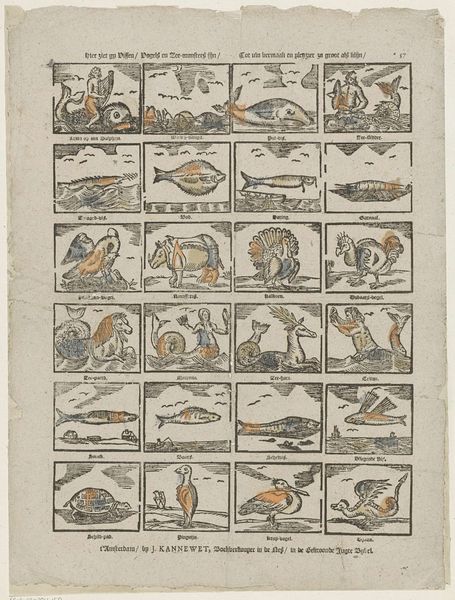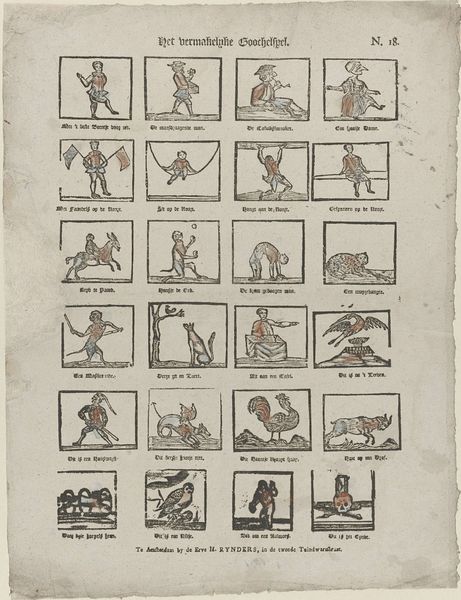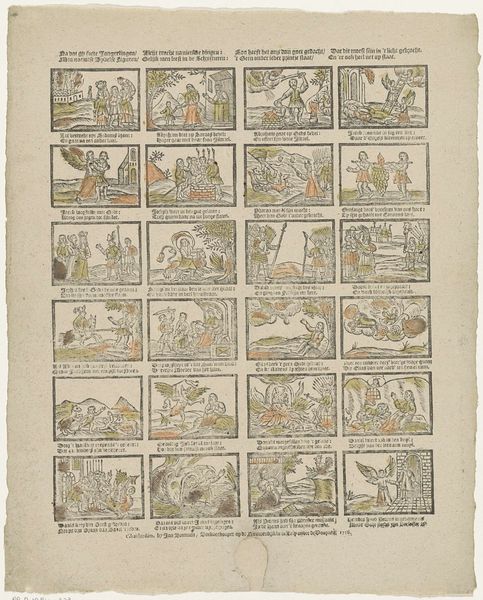
Dees dieren van verscheijden aerd, Dogh yder geldt maer na sijn waerd 1719 - 1724
0:00
0:00
print, engraving
#
narrative-art
#
dutch-golden-age
# print
#
figuration
#
genre-painting
#
engraving
Dimensions: height 361 mm, width 287 mm
Copyright: Rijks Museum: Open Domain
Curator: Look at this fascinating print. It’s called "Dees dieren van verscheijden aerd, Dogh yder geldt maer na sijn waerd," which translates to “These animals of different kinds, yet each is valued according to its worth." It was created sometime between 1719 and 1724 and published in Amsterdam by the widow of Gijsbert de Groot. Editor: Immediately, I’m struck by the compartmentalized organization. Each animal is meticulously framed in its own little box. And that somewhat naive hand-coloring adds a distinctive, almost fable-like quality. What’s most interesting to me is the repetitive application of lines and the obvious layering of materials. I’d be curious to know more about the division of labor in its production and how standardized printmaking practices informed this type of imagery during the Dutch Golden Age. Curator: A wonderful point. Each of these animals also acts as an allegory, carrying symbolic weight. See how the lion, traditionally a symbol of royalty, is juxtaposed with other, perhaps more mundane creatures? Editor: Exactly! The positioning, even within those frames, dictates a sort of hierarchy. The placement becomes significant – almost a commentary on social value. Notice how the materials also reflect social structures, where copper engraving enabled wide distribution, making moral lessons accessible across societal tiers. Curator: And that Dutch Golden Age really fostered the popularization of this type of moralizing emblem. Look closer and notice the verses under each animal. These pairings are so vital for understanding not only the period's values but the psychological relationship people held with the animal kingdom. It goes beyond just literal representation. Editor: Indeed. You begin to wonder who assigned this symbolic value to these creatures, and who consumes and propagates it through prints such as these? This points to the socio-economic factors underpinning how animals were valued and depicted, beyond mere aesthetics or even straightforward morality tales. Curator: This exercise highlights just how much information is condensed within a single print, speaking volumes about social structures. Editor: Right. Exploring the interplay of materiality and the message really makes you appreciate the power dynamics inherent in even seemingly simple artworks.
Comments
No comments
Be the first to comment and join the conversation on the ultimate creative platform.
